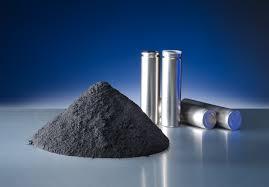LIB Anode Market Pain Points Hindering Growth and Innovation Momentum
The LIB anode market plays a crucial role in powering electric vehicles (EVs), consumer electronics, and energy storage systems. While demand for high-performance batteries continues to rise, the anode segment is facing significant challenges that are slowing its growth and innovation. These pain points range from material limitations and manufacturing constraints to environmental pressures and geopolitical instability. Understanding and addressing these issues is essential for achieving the scalability and sustainability required by the evolving energy ecosystem.

1. Material Limitations and Performance Constraints
One of the primary pain points in the LIB anode market is the reliance on graphite, which, although widely used, has reached its performance ceiling in many applications. Graphite anodes provide good stability and lifecycle performance but fall short in terms of energy density and fast charging capability—critical features for EVs and next-generation electronics.
Efforts to incorporate high-capacity materials like silicon are progressing, but not without challenges. Silicon anodes, while theoretically superior, suffer from significant volume expansion during charge-discharge cycles, leading to mechanical degradation and reduced battery lifespan. Stabilizing these materials without compromising cost or manufacturability remains a major obstacle.
2. Raw Material Sourcing and Supply Chain Vulnerabilities
The sourcing of key raw materials—especially natural and synthetic graphite—is another major pain point. A large portion of global graphite supply is concentrated in a few countries, particularly China, making the supply chain vulnerable to export restrictions, political tensions, and environmental regulations.
This overdependence not only creates price volatility but also exposes manufacturers to sudden supply disruptions. The challenge is further compounded by the increasing demand for high-purity graphite suitable for battery applications, which limits sourcing options even more.
3. High Production Costs and Capital Intensity
The production of high-quality anode materials involves complex processes such as purification, coating, and granulation, all of which are energy-intensive and expensive. Establishing new production facilities requires significant capital investment, especially when shifting toward advanced materials like silicon or implementing environmentally friendly methods.
These cost burdens are particularly challenging for startups and smaller players trying to enter the market. Even established manufacturers struggle to maintain profitability while investing in process upgrades, compliance, and R&D. The inability to scale cost-effectively poses a significant bottleneck to industry expansion.
4. Environmental and Regulatory Pressures
As sustainability becomes a global priority, the environmental impact of anode material production is coming under increasing scrutiny. Traditional mining and synthetic graphite production processes are associated with high carbon emissions, energy consumption, and waste generation.
Governments are tightening regulations related to emissions, resource usage, and waste disposal, compelling manufacturers to adopt cleaner technologies. However, transitioning to green processes adds to production costs and requires technological overhauls. Balancing sustainability with economic feasibility remains an ongoing dilemma.
5. Limited Recycling Infrastructure and Technology
While recycling is touted as a long-term solution to raw material challenges, current infrastructure and technology for recovering anode materials from spent LIBs are underdeveloped. The recovery of usable graphite or silicon from old batteries is technically complex and often economically unviable at scale.
Additionally, inconsistent battery designs and limited standardization make it difficult to streamline recycling processes. Without significant investment and regulatory support, recycling is unlikely to ease material supply pressures or reduce the environmental impact in the near term.
6. Manufacturing Bottlenecks and Technical Challenges
Manufacturing high-performance anode materials at scale is a technically demanding process. Issues such as uniform coating, impurity control, and structural consistency can impact battery performance and safety. Even slight deviations in quality can lead to product failures or recalls.
Moreover, scaling from lab innovations to commercial production is slow and expensive. The time and resources needed to validate, certify, and mass-produce new anode materials discourage experimentation and slow down the pace of innovation.
7. Geopolitical Instability and Trade Conflicts
Geopolitical factors such as trade wars, export bans, and diplomatic tensions add another layer of complexity to the LIB anode market. As countries prioritize domestic battery production and raw material security, international collaboration and resource sharing are becoming more difficult.
This fragmentation of global supply chains not only disrupts material flow but also increases costs and delays. For multinational companies, navigating different regulatory environments and maintaining supply chain agility is an ongoing challenge.
8. Lag in Standardization and Certification
The lack of industry-wide standards for new anode materials and manufacturing processes is another pain point. Without consistent benchmarks, it becomes difficult to evaluate, certify, and commercialize innovations. This slows down the adoption of emerging technologies and creates uncertainty for investors and end-users.
Developing clear and harmonized standards for anode materials would help accelerate innovation, improve interoperability, and reduce costs, but progress in this area has been slow.
Conclusion
The LIB anode market is essential to the future of energy storage, yet it faces a complex web of pain points that hinder growth, innovation, and sustainability. From material limitations and high costs to supply chain risks and environmental regulations, these challenges must be addressed through coordinated industry efforts, government support, and technological breakthroughs. Companies that can navigate these difficulties will be well-positioned to lead in the next era of battery advancement, but overcoming these hurdles will require both resilience and strategic foresight.
- Art
- Causes
- Crafts
- Dance
- Drinks
- Film
- Fitness
- Food
- Games
- Gardening
- Health
- Home
- Literature
- Music
- Networking
- Other
- Party
- Religion
- Shopping
- Sports
- Theater
- Wellness


